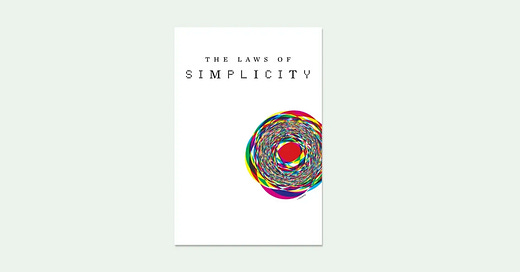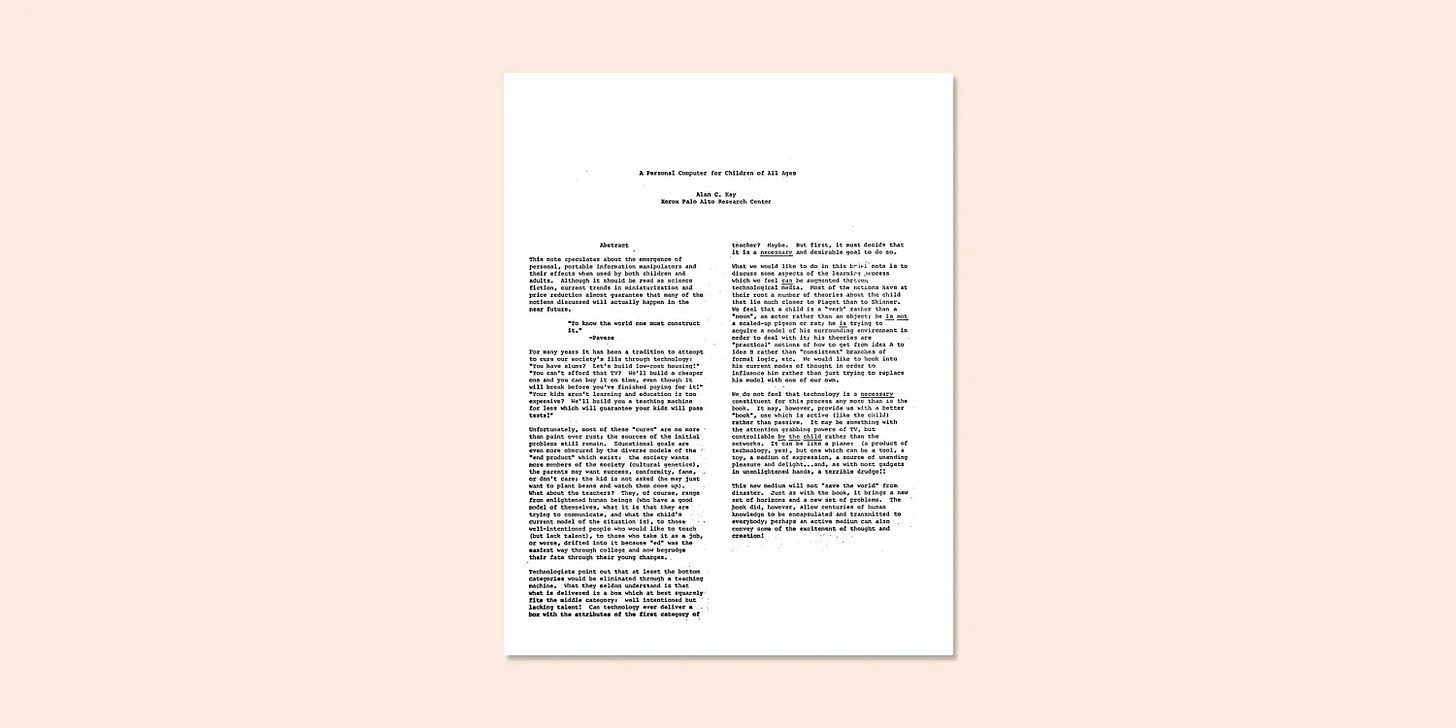The Laws of Simplicity · John Maeda · 2006
Product Managers often need to simplify complex concepts. I'll let you judge if there's any practical value for us in these laws:
Key Insights
The simplest way to achieve simplicity is through thoughtful reduction.
Shrink: Make it small, this lowers expectations. Make it appear delicate and fragile (lightness and thinness). Smaller, lesser, humbler. More value is delivered than originally expected. Example: iPod fits in your hand, mirrored back made it seem smaller.
Hide: Hide the complexity. Hide it until you need it. It's a form of deception. Complexity becomes a switch the owner can flip. Example: the clamshell phone, the menu bar.
Embody: Perception of quality becomes important after shrinking and hiding. Less needs to seem like more. Embody quality. You can invest in quality through craftsmanship or marketing (real or perceived).
Organisation makes a system of many appear fewer. Two questions of decluttering: What to hide? Where to put it? Organisation makes a system of many appear fewer IF the number of groups is significantly less than the number of items. Working with fewer makes life easier. What goes with what? Sort: find the natural groupings. Label: Assign a name. Integrate: groups that appear significantly like each other. Prioritise: collect highest priority items into a single set so they receive the most attention. Use the Pareto principle and focus on the vital few.
Savings in time feel like simplicity. Speed is often attributed to the simplicity of the system.
Learn: knowledge makes everything simpler. Relate, translate, surprise:
Relate: leverage the human instinct to relate
Translate: the relationship into a tangible object or service
Surprise: add a little surprise at the end (makes the time feel worthwhile)
Context: What lies in the periphery of simplicity is definitely not peripheral. There's a tradeoff between being completely lost in the unknown and completely found in the familiar. How directed can I stand to feel? How directionless can I afford to be? Complexity implies the feeling of being lost, simplicity implies the feeling of being found. Transitions from simple to complex are key.
More emotions are better than less. Determine just the right kind of more (add back emotion). Be sensitive to how you're feeling. Form follows function Feeling follows form. Great art makes you wonder. Great design makes things clear. Art is a reason to live, is tempered with design (clarity of message). Achieving clarity isn't difficult, achieving comfort is harder.
In simplicity we trust. The more a system knows about you, the less you should have to think. The more you know about the system, the more control you can exact. How much do you need to know about a system? Effort is required to learn and master. How much does the system know about you? Trust must be offered to the system (and constantly repaid by the system).
Some things can never be made simple - and that's OK.
Simplicity is about subtracting the obvious, and adding the meaningful.
Away: more appears like less by simply moving it far, far away
Power: use less, gain more.
Quick Links
Types of UI that generative AI has necessitated · Article
Doshi’s product management life lessons · Video Playlist
How Meta use pre-mortems to avoid post-mortems · Article
4 Project types: Quests, fog, movies and paint by numbers · Article
How to get into flow · Article
A Personal Computer for Children of All Ages
Alan Kay , Paper Author 2. 1972. (View Paper → )
The relevant parts of the abstract can be copied here in italics...
This note speculates about the emergence of personal, portable information manipulators and their effects when used by both children and adults. Although it should be read as science fiction, current trends in miniaturisation and price reduction almost guarantee that many of the notions discussed will actually happen in the near future.
Kay envisioned the computer not merely as a tool but as a personal, interactive medium for learning, creativity, and expression. This idea laid the foundation for how modern devices like laptops, tablets, and smartphones are used today—not just for work but as platforms for communication, gaming, education, and artistic creation.
The Dynabook is essentially the prototype for modern portable devices like laptops, tablets, and smartphones. It was described as: Lightweight and portable, Affordable, aiming to be widely accessible and equipped with a graphical interface, dynamic media capabilities, and a keyboard or touch interface.
Book Highlights
Get all the information out there. Indulge the broadest definition of what could conceivably be relevant. Reward the process of pulling the skeletons of our own reasoning out of the closet. As a rule of thumb, if we have an urge to leave out a detail because it makes us uncomfortable or requires even more clarification to explain away, those are exactly the details we must share. The mere fact of our hesitation and discomfort is a signal that such information may be critical to providing a complete and balanced account.
Annie Duke · Thinking in Bets
No problem is too large for a sprint. Yes, this statement sounds absurd, but there are two big reasons why it’s true. First, the sprint forces your team to focus on the most pressing questions. Second, the sprint allows you to learn from just the surface of a finished product.
Jake Knapp · Sprint
Just as with the food we put into our bodies, it is our responsibility and right to choose our information diet. It’s up to us to decide what information is good for us, what we want more of and less of, and ultimately, what we do with it. You are what you consume, and that applies just as much to information as to nutrition.
Tiago Forte · Building a Second Brain
What is driving the driving factors?
Donella H.Meadows · Thinking in Systems
Quotes & Tweets
Limiting your options now will expand your opportunities in the long run because you can remain focused enough to master something.
James Clear
People have too inflated sense of what it means to "ask an AI" about something. The AI are language models trained basically by imitation on data from human labellers. Instead of the mysticism of "asking an AI", think of it more as "asking the average data labeller" on the internet.
Few caveats apply because e.g. in many domains (e.g. code, math, creative writing) the companies hire skilled data labellers (so think of it as asking them instead), and this is not 100% true when reinforcement learning is involved, though I have an earlier rant on how RLHF is just barely RL, and "actual RL" is still too early and/or constrained to domains that offer easy reward functions (math etc.).
But roughly speaking (and today), you're not asking some magical AI. You're asking a human data labeller. Whose average essence was lossily distilled into statistical token tumblers that are LLMs. This can still be super useful of course. Post triggered by someone suggesting we ask an AI how to run the government etc. TLDR you're not asking an AI, you're asking some mashup spirit of its average data labeller.
Andrej Karpathy








